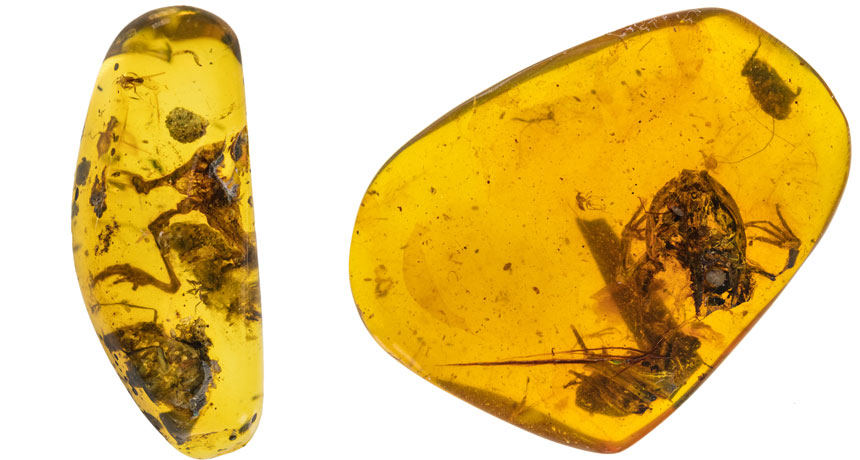These newfound frogs have been trapped in amber for 99 million years

About 99 million years ago, tiny frogs hopped through a wet, tropical forest — and an unlucky few ran afoul of some tree sap. Four newly described frog fossils, preserved in amber, offer the earliest direct evidence of ancient frogs living in a humid tropical clime — just as many modern amphibians do.
None of the frog fossils is complete, making it difficult to place the frogs within their family tree: One has a partial skull and another a froggy outline, although CT scanning revealed no remaining skeletal material inside the impression. So researchers dubbed all four fossils Electrorana limoae (electrum for “amber” and rana for “frog”) in a study published June 14 in Scientific Reports. Anatomy-wise, the ancient frogs most resemble a modern group that includes fire-bellied toads.
The fossil record contains relatively few frogs, despite the amphibians’ more than 200-million-year history. The frog fossils that do exist suggest that frogs have looked distinctly — well, froggy — for hundreds of millions of years, says study coauthor David Blackburn, an amphibian biologist at the Florida Museum of Natural History in Gainesville. “The aspects that make them diverse are not their skeletons, it’s their ecologies, natural histories, reproductive modes. Things that are really hard to find in the fossil record.”
That’s what makes the amber specimens so interesting: The chunks also contain preserved spiders, velvet worms and bamboo — all pointing to a tropical environment. Such paleoecological evidence offers scientists a rare glimpse into the life and times of tropical frogs of old.